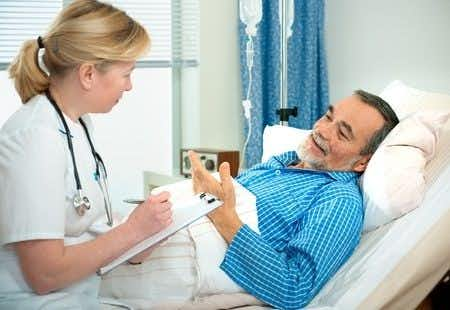This case involves an eighty-two-year-old male patient who was a nursing home resident. He had a past medical history of dementia and severe falls which prompted his family to seek 24-hour care for the patient. The patient suffered a fall in his bedroom at the nursing home when he slipped on the hardwood floor. The patient was discovered by a member of the nursing staff and was rushed to hospital via ambulance. An X-ray revealed that the fall had resulted in a fracture of the right femoral head. The patient required surgery to replace the hip. The patient underwent the procedure which was successful. He was discharged back to the nursing home following the surgery. Several days after discharge the patient began complaining of fever and pain in his right hip. The patient returned to hospital where investigations revealed he was suffering from osteomyelitis. The patient underwent treatment for the infection but did not survive. He died two days after hospitalization. The family of the deceased alleged that the nursing home did not take adequate measures for fall risk reduction. They believe that the facility should have taken various precautions, for instance: putting down mats. This was never done until after the incident.
Question(s) For Expert Witness
What is the proper protocol when you have a patient with a history of chronic falling?
Expert Witness Response
The proper protocol for a patient with a history of falls is firstly to review his or her fall assessment evaluations with re-assessment for changes in condition. Review of previous interventions for fall prevention with review of medications, review of patient’s sleep patterns. Preventative measures such as low beds, body or mattress alarms, moving the patient to a room close to high observation areas can be employed. Fall risk and the prevention of falls is based on individual risk factors. The facility has a responsibility to assess the resident’s risk factors and develop a comprehensive care plan based on those risk factors. The use of fall mats is based on the assessment made by the interdisciplinary teams. The team has to weigh the benefits and risks of such interventions. While a fall mat may not have prevented the fall it may have reduced the risk of injury during the fall. The decision to use such a mat would have been determined by factors such as, where the history of falls occurred , as well as the risk of the mat creating a hazard in the event the resident was ambulatory or mobile in a wheelchair. If the fall occurred from the patient’s bed and the injury occurred at bedside and the intervention (for example, placing a mat on slippery areas) would not have created a risk greater than the benefit it would have created, then a mat may have been an appropriate measure to prevent an injury. In this case several questions need to be asked. After the fall and return to facility did the facility attempt to restore the resident back to their prior level of activity. Did they monitor for complications after the resident underwent the orthopedic procedure?
About the author
Dr. Faiza Jibril
Dr. Faiza Jibril has extensive clinical experience ranging from primary care in the United Kingdom, to pediatrics and child abuse prevention at Mount Sinai Hospital, to obstetrics in Cape Town, South Africa. Her post-graduate education centered on clinical research and medical ethics. Dr. Jibril is currently Head of Sales in the US and Canada for Chambers and Partners - a world leading legal ranking and insights intelligence company.

